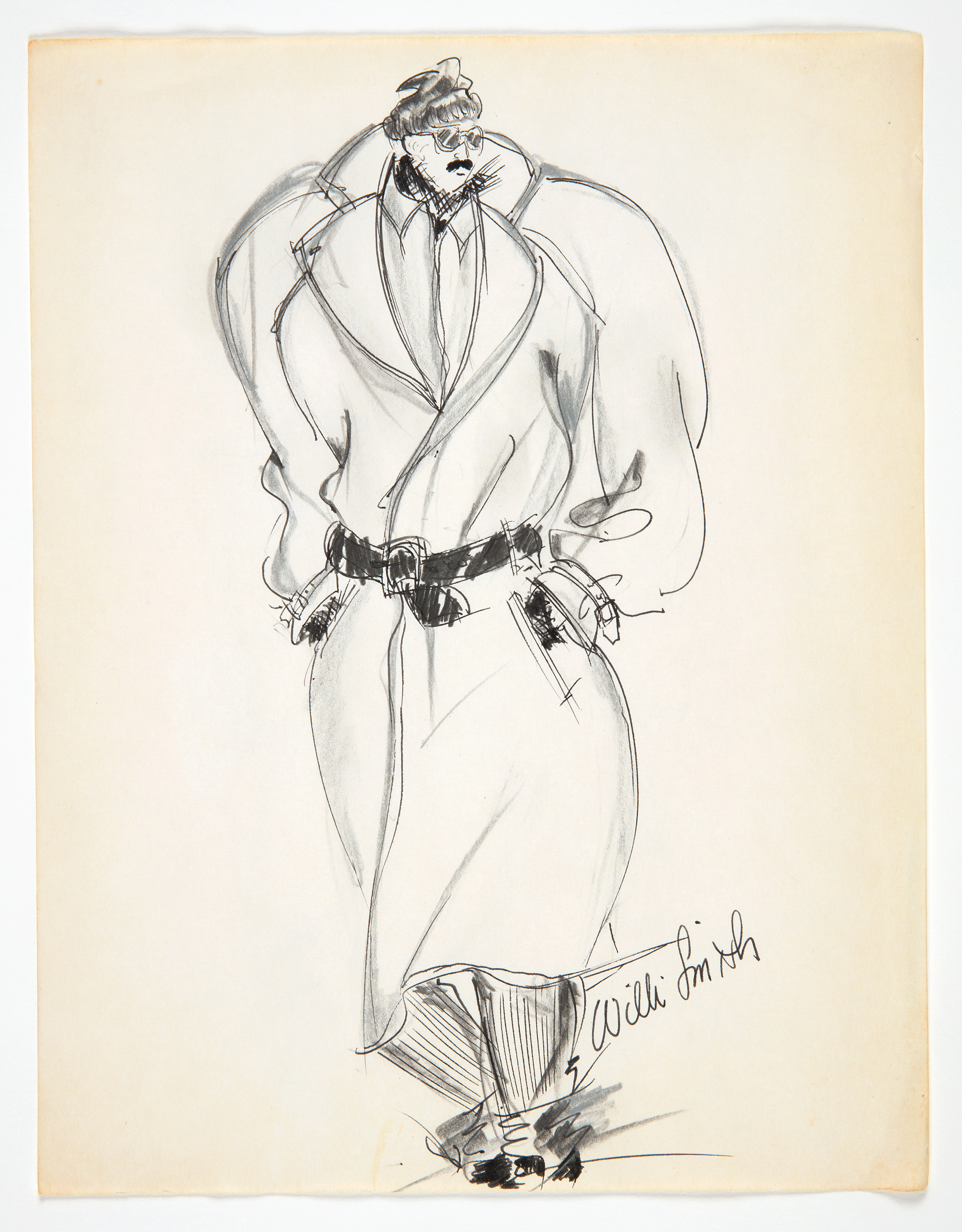Alvin Bell
When I first met Willi around 1964 at the Philadelphia College of Art (PCA), he was working as an illustrator for Prudence Strickler, whom I am still really good friends with. She co-owned Prudence and Strickler Originals, which specialized in leather and suede designs. I was also an illustrator, and Willi and I came up in fashion together. We were like brothers. When we were young, Willi would show me photographs of a shirt, pants, and blazer, and I would ask, “Why would you want to make that stuff?” He would respond, “Alvin, I want to dress people in the streets.” Willi created pedestrian clothes—clothes for the average person. He always told me that he strove to be the “designer of the people.” Conversely, my upbringing in the church was a primary influence on how I approached creating my sophisticated ensembles. My approach to design was akin to Yves Saint Laurent and Christian Dior; I was inspired by Paris fashion and the luxury market. I worked with Anne Klein and met with Halston, and I was typically hired by those who made expensive clothing. Willi was different. When he and I would look at the designs of my favorite Parisian couture houses, he would say, “Why do you like these things? Who wears that?” I wanted to design for “better” stores, and I did. I sold in Nordstrom’s, Saks, and Bergdorf Goodman, and he would say to me, “You really got that wish of yours.”
When Willi was making womenswear, the industry loved him for more than his clothes; they loved him because of his intellectual prowess and how bright he was. Halston, Caroline Kennedy, the fashion elite, and high society wanted to spend time with him because he could talk about so many topics, and he had a really wonderful command of the English language. He was very funny; he would always say to me later in life, “When we were younger, you were so uptight, and you still are.” I didn’t feel that way; I just came from a very religious family. He had a sense of humor and was extremely well read. He read constantly, from the time he was ten. I remember when he was twenty, he introduced me to the novels of Jane Austen and the works of Orson Welles. When we were back at PCA, Willi wanted to learn how to speak French and Italian. I was and still am a talented illustrator, but he was academically brilliant.
There will never be another designer like Willi. Black designers aren’t as supported today by the industry as they were during Willi’s time. Willi was the most talked about artist in our peer group. He was everywhere, and I was always in disbelief at how many people he was connected to.

Willi Smith for WilliWear, SUB-Urban Fall Collection, 1984

